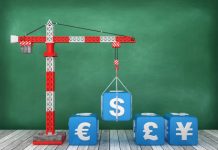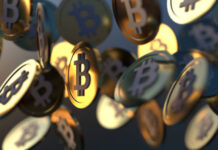Markets
US and European bond yields both ‘rebounded’ 2-3 bps yesterday after Tuesday correction. YTD peak which came within reach after Monday’s strong US services ISM for now prove to be a too high hurdle. Fed Speakers (Kugler, Collins, Barkin, Kashkari) gave small nuances on the mantra that inflation is cooling, but that more evidence is needed to start lowering rates somewhere later this year. For now, tensions at some regional US Banks are not a major topic in the official Fed communication. Still it remains a risk for the Fed to step in earlier than what is guided for now. This maybe also be why markets don’t rule out the option of a May rate cut that easily. The issue is also reaching some banks in Europe and Japan, but for now remains a secondary theme for markets. The S&P 500 yesterday even touched a new all-time record close (+0.85% and almost touching the psychological barrier of 5000). After a poor open, the US regional bank index (KWB) also regained some ground after a negative open. Still the issue deserves to keep an eye on. The record $42bn sale of 10y US Treasury notes met with solid investor demand. Investors apparently see recent price concessions as an opportunity to step in. On FX markets, the dollar ceded slightly further ground, but with no major technical impact. DXY closed just below 104 (103.94). EUR/USD extended its rebound off the 1.0724 support (close 1.077), but the euro doesn’t give the impression to be able to really profit from (temporary) USD softness. USD/JPY was the exception as it is again nearing the 148.84/89 YTD peak levels. Sterling remained in good shape (close 0.8531), but the key 0.8493 support stays out of reach.
Asian equities show a mixed picture this morning, with Japan and Korea outperforming. Chinese markets (CSI 300) basically are hovering sideways going into the Lunar New Year Holidays starting tomorrow. BOJ Deputy Governor Shinichi Uchida in a speech indicated that even if the BoJ were to end its negative policy rate policy, it is very unlikely that it will raise interest rates rapidly. Markets drew some comfort from the Uchida comments (Nikkei +2%, USD/JPY rising). Even so, the comments implicitly suggest that a first rate hike is coming (very?) close. Later today, the calendar is again thin with the US jobless claims and the sale of $25bn 30y US Treasury bonds the exception. Central bank speakers include ECB’s Wunch, BoE’s Catherine Mann, ECB’s Lane and Fed Barkin. We also keep an eye at the policy decision of the Czech national bank.
News & Views
Chinese consumer prices dropped for a fourth month straight in January. The accelerated pace of -0.8% y/y is the fastest since September 2009 and more than the -0.5% expected. Food was still weighed heavily (-5.9%) on the headline number. Excluding for this as well as energy, core inflation rose 0.4% but that as well was a further deceleration from the 0.6% the month before. Persistent deflationary pressures are also seen in factory gate inflation, which has remained in sub-zero territory since October 2022. The numbers once again raise pressure on authorities to step up policies and revive aggregate demand that’s buckled under weak consumer confidence and private debt. Several measures have been announced in recent months but none of them have the shock-and-awe effect that’s probably needed to kickstart the economy. USD/CNY this morning opened weaker but pared the minor gains quickly after. The pair is currently trading around recent highs just south of 7.20.
The US Congressional Budget Office yesterday projected the country’s deficit to soar by about two-thirds in the next 10 years, bringing it from $1.6tn this year to $2.6tn. In terms of GDP, this means going from 5.6% to 6.1%. The director of the non-partisan organization said interest payments would account for about 75% of the deficit’s rise with the average rate seen advancing to 3.4% over that period. Net interest payments will climb to 3.1% of GDP next year, that’s the highest since recording began in 1940, and will hit 3.9% in 2034. The CBO sees US debt piling up to more than 100% of GDP in 2025 and then further to 116% in 2034..













